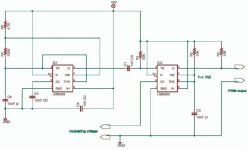ideas,... specs
for DC brushed,...
ampflow E-150 testing, only need small battery, but ferrite
for continous use, say around 10A at 24V, with 60-70W heat
s28-150 is strong,... over 280A stall, can also run on 26V neodym,
at 24V good to 20A, with cooling, for continuous use,...
as you'd see, yeah, up to ~3.8HP,... but mostly heat, and it will burn up the motor,
so those numbers not really true,.. these are sealed, and have larger axle,..
for brushless,
HXT 80-100-B 130Kv Brushless Outrunner be a good pick, like the 130kv low rpm per volt,
bigger would be better, but this one is already 100mm plus, and crank space is limited,
- ESC 100A +, but would like one with a current limit, programmable be nice,
would like to be able to set it at 40A , 36V
thoughts, for peak or continuous use, those motors get hot, and once the magnets get fried,
efficiency goes down,... and they will produce heat instead of motion,...
so down the road some sort of cobalt motor, preferably brushless, and sealed be nice,
what does not cost an arm and a leg,...
scooter motors,... there a bunch,...
- controller is big,
- motors, big and heavy, and most of them are to big , to be mounted , between the crank
- cheap/ cheaper,...
- low efficiency
gearbox,.... the hard part,
since I'd like it on a mtb bike, target speed 7-20mph,... so 50-200rpm on wheel
target power, I'd say 100W min, 250W nominal, 600W burst 2-4min, 1200w peak burst 0.5-5 sec
torque min 8 nm, 25 nm target, 500 nm peak, burst/stall condition
with that in mind, think, we'd need a clutch, + freewheel,
softstart limit, also some sort of min speed engagment, aka bike needs to move at least 2-3mph, in motion, before engaging,
otherwise, need a downhill bike, so it does not rip appart, and with big motor , big battery, it be more of a motorcycle,...
thought of that too,.. take a dirt bike, and put a e-tek motor on, yeah like that, but would not be a bicycle anymore,
and battery and motor , be a couple of grands,..
back to drive train,
- need freewheel options
- clutch
- belt pulleys sprockets, with low profile clamps, aluminum and plastic (re enforced fiber), not sintered diecast
also , cheap once , 20-30$ , not $150+ and custom order, it's definitely a mess, let me know of a place you can buy 1 or 2 at the time,.... belts also get expensive, and tensioners too, need lightweight ones, not industrial diecast , with no bearing, gee, I don't have a couple of killowatts to spare,
notes:
there is on in the swiss, with a scooter motor and planetary reducer, but steel gears meshing together in a muddy enviroment,
is to noisy and won't last, hypoid right anglerack pinion sounds good on paper, they use it on cars, needs an oil bath, can transfere the torque, but non are available small enough,... the big stuff is way to havy, and expensive
- iron less , core less motor ,....


